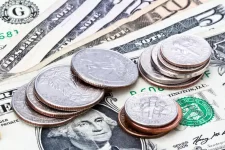
A Comprehensive Guide to the US Dollar: History, Fluctuations, and Outlook
Welcome to our educational guide on the United States Dollar (USD), the world’s primary reserve currency. In this comprehensive resource, we will delve into the currency’s history, fluctuations, strengths, weaknesses, role in the global economy, opportunities, challenges, and future outlook. Our aim is to provide you with a well-rounded understanding of the USD and its impact on our daily lives and international financial transactions.
US Dollar: The History of the United States Dollar
The origins of the USD can be traced back to the early days of the United States. The Continental Congress officially created the US Dollar on April 2, 1792, with the passage of the Coinage Act. This legislation established the United States Mint and laid the foundation for the country’s monetary system.
The name “dollar” has its roots in the German word “Thaler,” a large silver coin used in Europe in the 16th century. The Spanish dollar, or “piece of eight,” was also an influential predecessor to the USD, as it was a widely circulated coin in the American colonies during the 17th and 18th centuries.
US Dollar: Fluctuations, Strengths, and Weaknesses
The value of the USD fluctuates over time, influenced by various factors such as economic indicators, political events, and market sentiments. These fluctuations can impact the strength and weakness of the currency in relation to other currencies.
Strengths: The USD is the world’s primary reserve currency, offering liquidity and stability. It is also the most widely traded currency in the foreign exchange market, which contributes to its strength and global importance. Additionally, the US has a large and diverse economy, which can provide a stable backdrop for the currency.
Weaknesses: The USD is vulnerable to fluctuations in global economic conditions, political events, and shifts in market sentiment. Furthermore, the country’s large national debt and persistent trade deficits can negatively impact the currency’s value.
US Dollar: The Role of the USD in the Global Economy
The USD is the world’s primary reserve currency, held by other countries’ central banks as a means to pay off international debt and influence their domestic exchange rates. This role contributes to the currency’s importance in international trade and finance.
Moreover, the USD is a crucial player in the foreign exchange (Forex) market, as it is one of the most widely traded currencies. The currency’s prominence in this market grants it significant influence over global economic affairs.
US Dollar: Opportunities and Challenges
Opportunities: The USD’s status as the world’s primary reserve currency offers various opportunities for businesses and investors. For instance, it allows for easier access to global markets, as many transactions are denominated in USD. This currency also presents investment opportunities, as its fluctuations can be used to make profitable trades.
Challenges: The USD’s dominance is not without its challenges. As emerging economies grow in importance, their currencies could pose a threat to the USD’s reserve currency status. Additionally, the country’s large national debt and ongoing trade deficits may undermine the currency’s value in the long term.
US Dollar: Future Outlook
The future of the USD remains uncertain, as global economic dynamics continue to shift. While the currency’s status as the world’s primary reserve currency is unlikely to change soon, emerging economic powers and digital currencies may pose challenges to its dominance.
In the short term, factors such as economic indicators, political events, and market sentiment will continue to impact the USD’s fluctuations. In the long term, the currency’s future will depend on the ability of the US to maintain economic stability and address the challenges it faces






